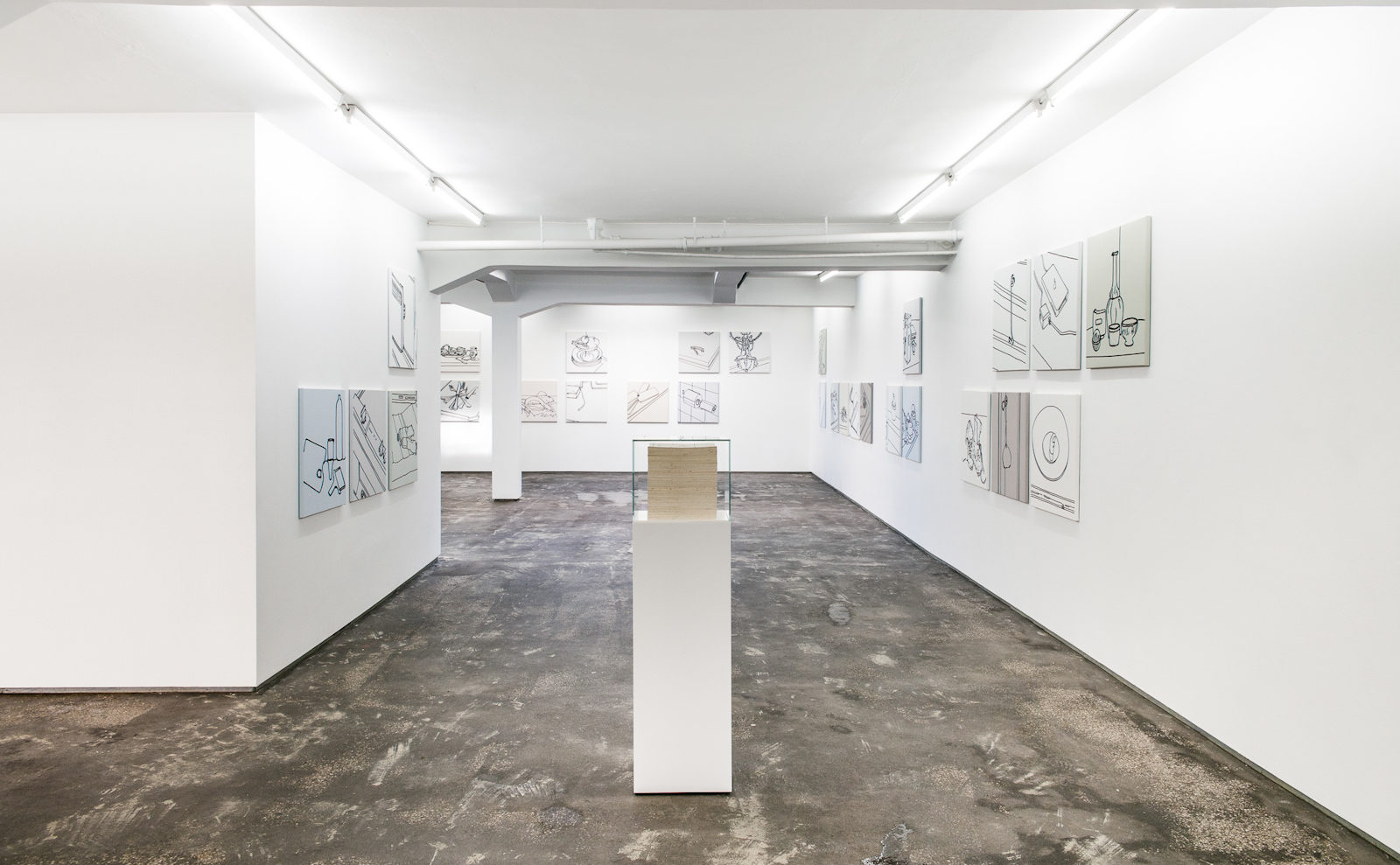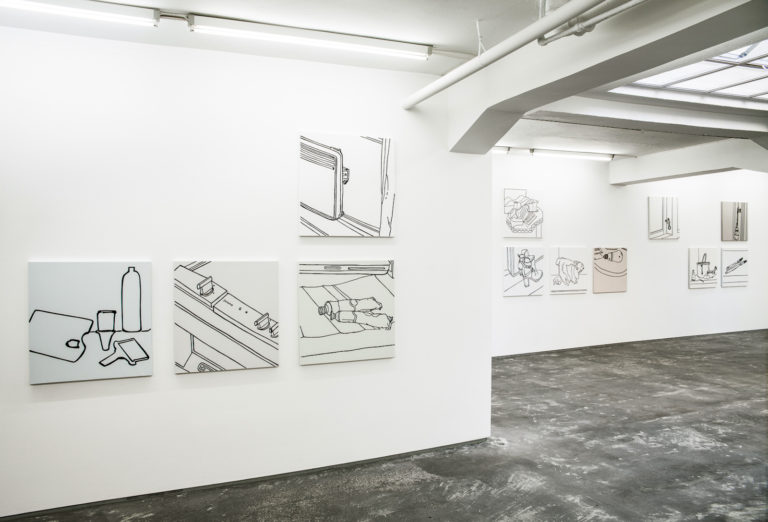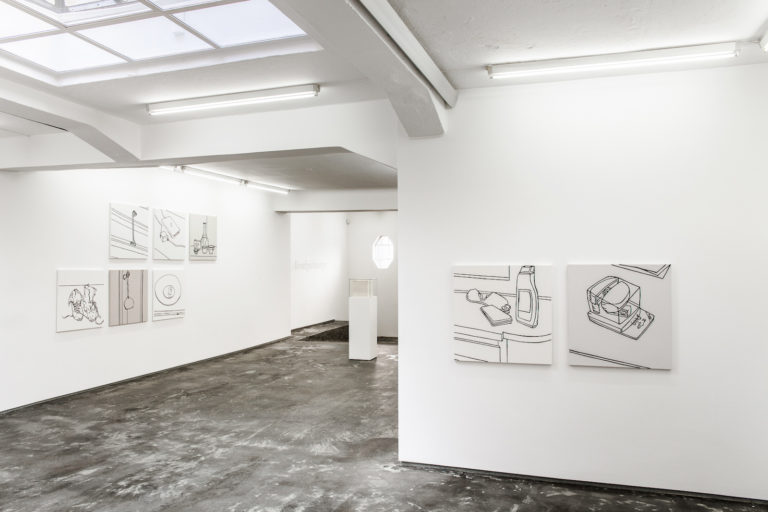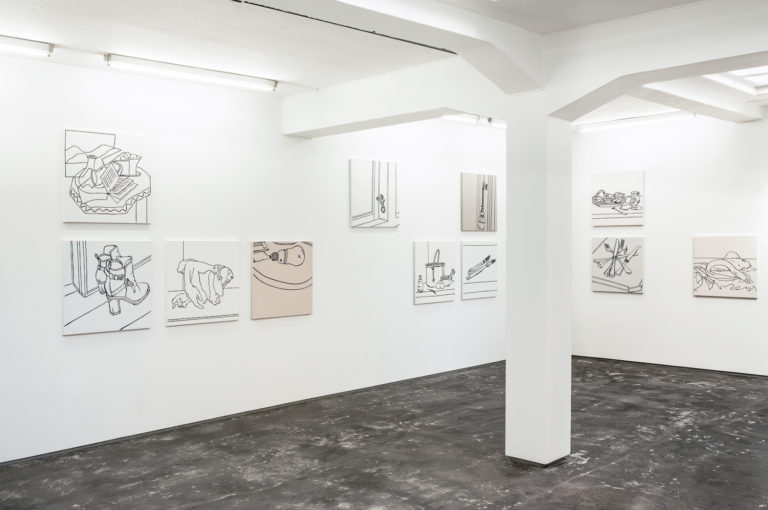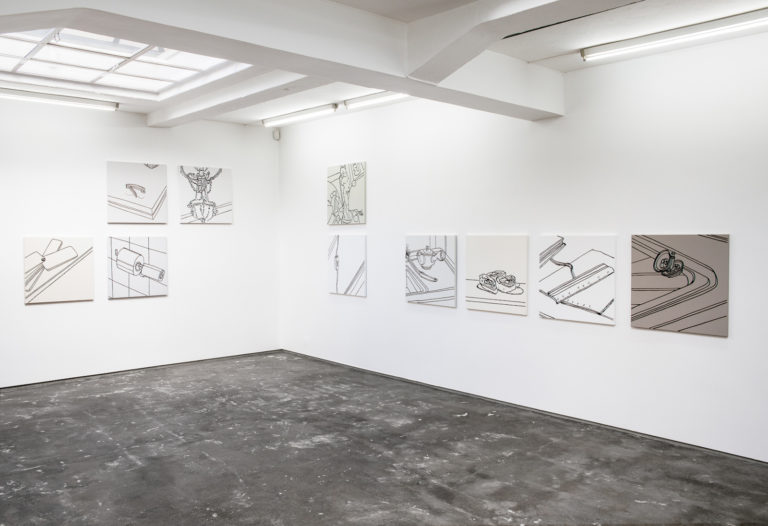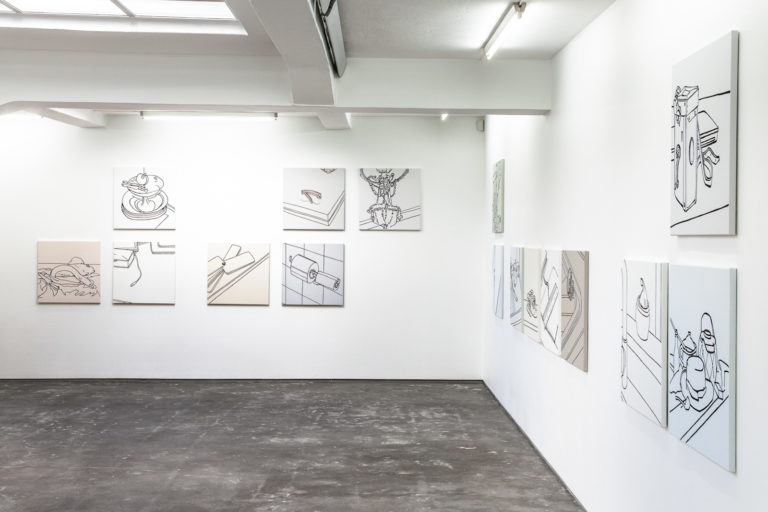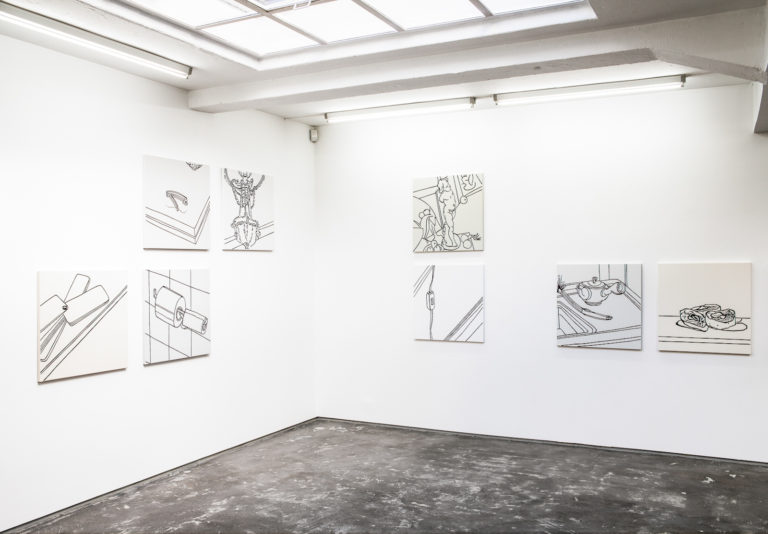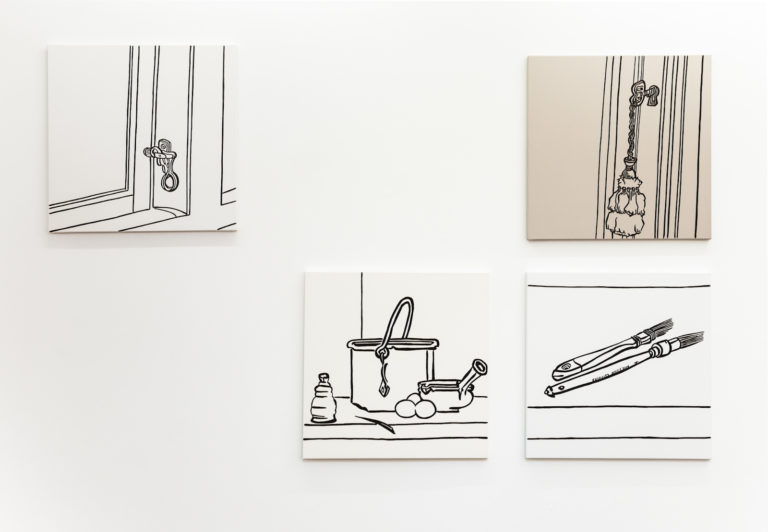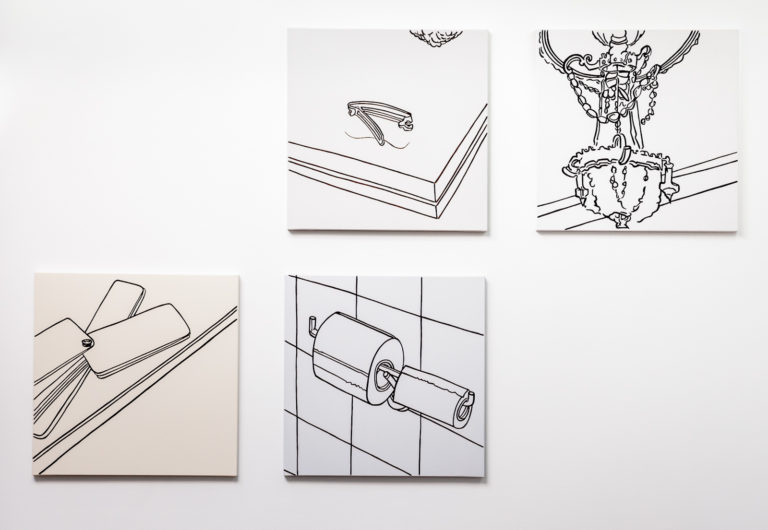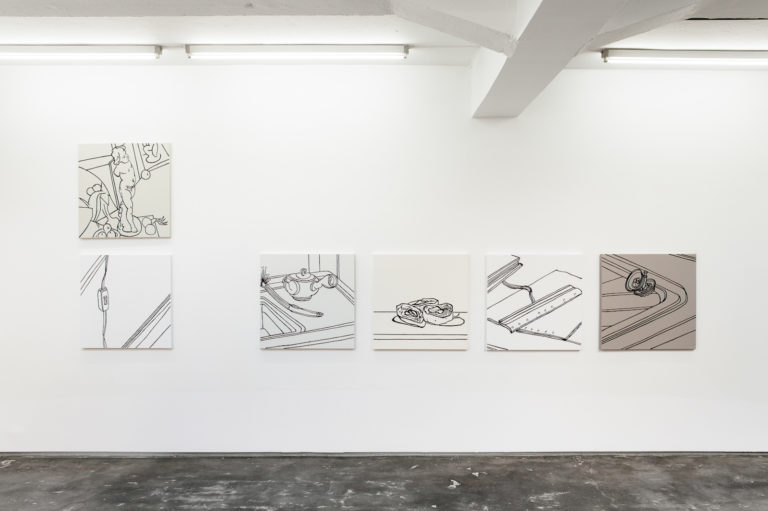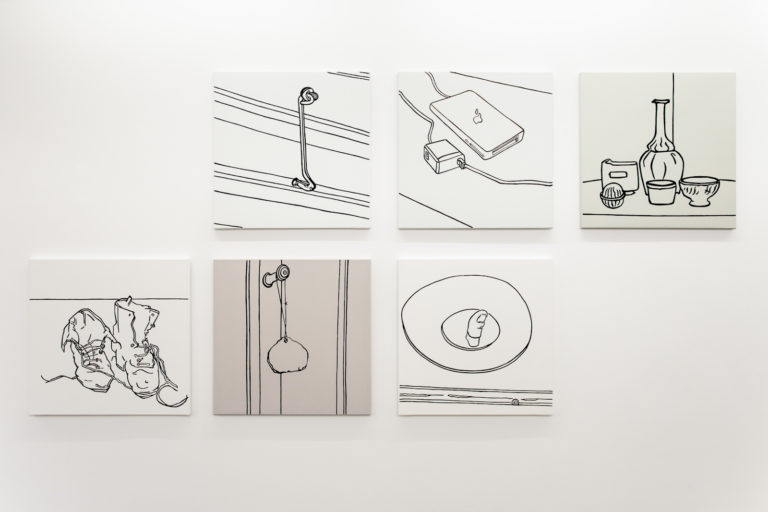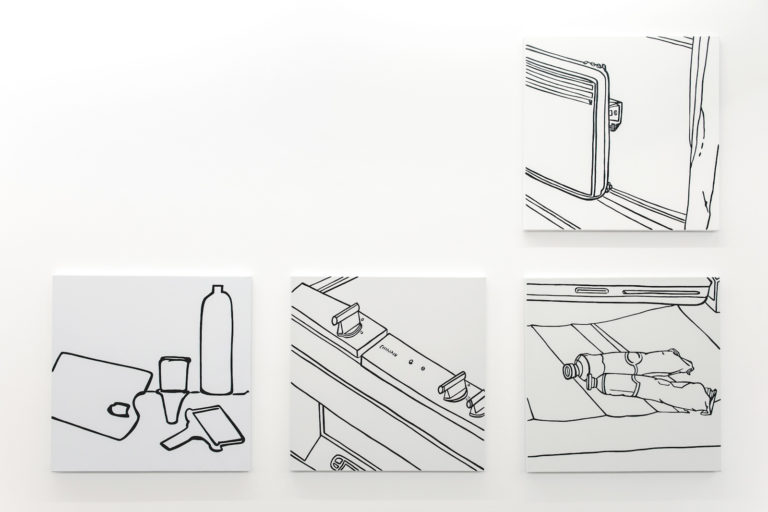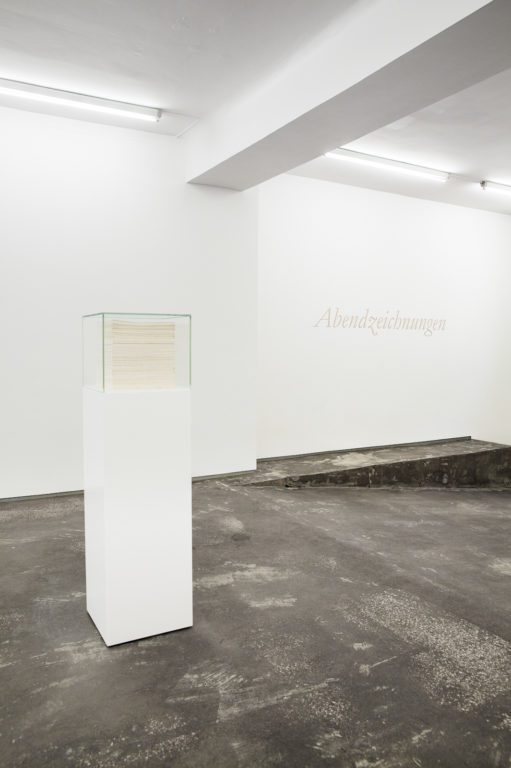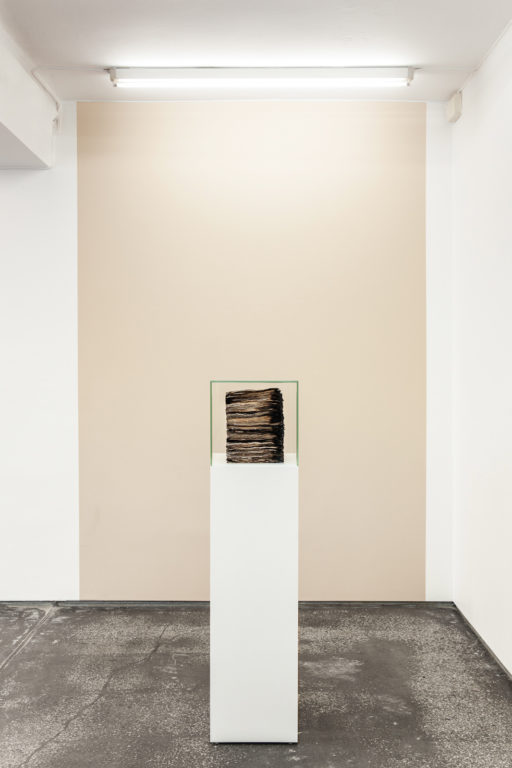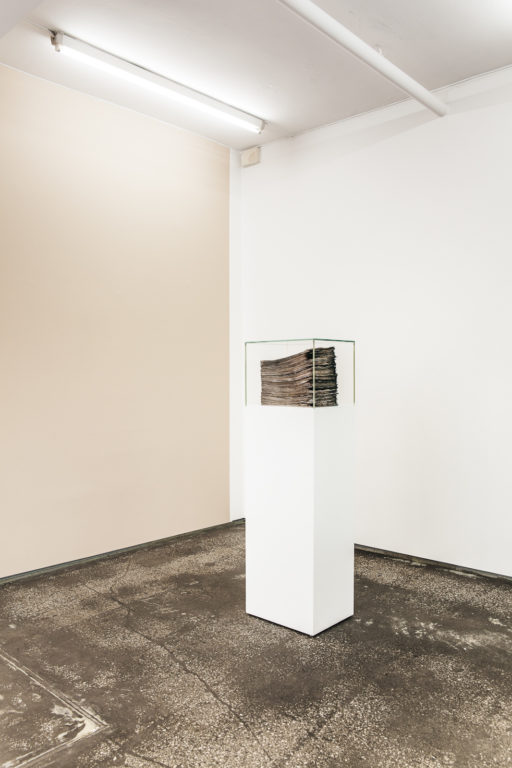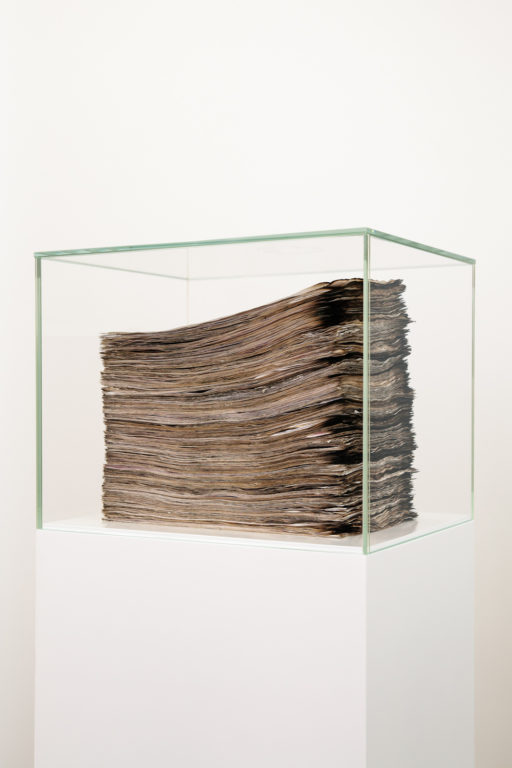OSL contemporary is proud to present the exhibition Evening Drawings, Abendzeichnungen, with new works by Dag Erik Elgin. The works on show continue a serialized project instigated in 1996, where everyday observations drawn within the private sphere, later act as the motifs for paintings executed in the studio. The latest works introduce an extended foundation in art historical references, as well as a new square format. The gallery will present 38 paintings, executed in oil on canvas in a dual palette. Each of these renders the contours, either from a drawing, or from selected details of historical works. With Evening Drawings (archive1996-2000) and Evening Drawings (archive 2000 - ) Elgin's drawings are also exhibited for the first time in parallel with the paintings.
Through projects such as MoDERNISM MACHINE (2012), Balance of Painters (2012), La Collection Moderne (2009), Originals (2010) and Figure (2007) Elgin's production has centered on an investigation of the historical and immediate positions of modern painting. In Evening Drawings, Abendzeichnungen the perspective shifts from the public sphere and historical references, to a private space where observations are registered in the "here and now". As such, the series forms a unifying core in Elgin's artistic project; a meeting point where visual registration of an intimate nature, meets the larger art historical cataloguing. The project relates to the tension between private and public in artistic practice, and moves through distinctive levels of observation, interpretation and representation following the process from which a first, personal observation towards the publicized work's autonomous existence, aesthetic and reception.
In Amour Vacui (2006) Jan Brockmann and Elgin reflect on the aspects of gaze and space in relation to the translation from drawing to painting: the original documentations occur with immediacy and involves a split gaze between the object registered and the registration on the paper. Within the studio environment, the gaze is "delayed" and "hermetic" in comparison to the original encounter, with no corrective outside the picture plane. "Simultaneously, there is a consciousness of the mental registration of countless views" and "there exists a corrective based on historical assumptions and images that have gone before". The process starts from and contributes to a culturally and historically charged picture memory or picture potential and positions within what Elgin describes as "a tension between partly trivial observations...and the discourse of painting".
In 2013, when Elgin introduces art historical references in the pieces, it is through paintings that reflect modernity's transgressive introduction of the intimate into the work: Manet's rendering of a daily meal, Goya's slices of salmon, Chardin's kitchen utensils, or the studio objects of Cézanne and Morandi. Elgin appropriates these motifs in the same visual format as his own sketches from the private home, and thus suggests an impartiality in visual memory, between the glance that falls on a drain plug and the glance that falls on a Matisse.
Through the 18 year history of the project, Elgin's drawings have been represented only as an absent reference. In this exhibition, the drawings figure in parallel with the paintings for the first time, however as individual objects, they still evade visibility. In Evening Drawings (archive1996-2000) og Evening Drawings (archive 2000 - ) the totality of the material is placed within closed archives, where the drawings cannot be viewed as individually distinct records, but instead summarizes and documents the construction of a process and a memory. This split representation also visually demonstrates the chapter of the project's creation history, where a studio fire in 2000 marked an end, and a subsequent new beginning.
Evening Drawings, Abendzeichnungen - Text for catalogue, berlin north, Hamburger Bahnhof, Berlin 2004
The paintings Abendzeichnungen (Evening Drawings) make reference to drawings executed at home in the evening, simple line drawings of, for example, a wall socket in a corner, children´s toys lying on the floor, or a kitchen sink. These domestic observations do not, however, supply the subject itself; the drawings serve instead as an intermediary, as the initial receptors of the domestic atmosphere. Because the drawings - as points of departure for the paintings - remain unseen, they fulfil a function similar to the one served by the wine bottles containing uranium in Hitchcock´s film Notorious. Like the bottles, the drawings - while decisive for the plot as a whole - never propel themselves in the foreground, into visibility. Precisely by virtue of their absence, they become constitutive elements. The appellation Evening Drawings suggests such a decisive role, here played by the drawings, although the group of works consists, obviously, of paintings.
The title denotes an intense absence of narration, and recalls the position of painting. Viewed formally, the theme of Evening Drawings is the translation of a drawing into another medium, into painting. The transit can also be reversed: the various monochrome grounds of the paintings, for example, are correlated to a colour code inherent in paper, a code referring to the condition of the paper, its fibre content, whether it has been bleached or has yellowed, etc. In relation to this experience, painting reveals itself as belated, it is directed toward a reconstruction of the immediate form of appearance of the drawing. In the paintings, less concern is accorded to the appearance of a wall socket or a curtain, for example. It is far more a question of the loss of the immediate, almost phenomenologically conditioned experience, and about attempts to recreate such experience via defamiliarization.
For the process by which drawings are translated into paintings is not motivated by formal concerns; it is not a question of refinement. The group of works is far more impelled by the necessity to leave open experiences of ambivalence between dichotomies like such as private-public and abstract-narrative. The question of translation cannot be reduced, however, to a shift that is conditioned by media. It is instead a question of the parallel existence of spatial experiences that are by nature variable: movements through studio and apartment, in daytime and evening; experiences of abstraction and narration, of the invisible and the visible. Bottles of uranium and plotline.
Dag Erik Elgin
Exhibition history - Evening Drawings, Abendzeichnungen:
Aktuelle Kunst aus Norwegen (Kuratorer Annie Bardon/Gerhard Finck), Museum Folkwang, Essen 1996 and Kunsthalle Rostock 1998
Imperfektum (Curator Jan Brockmann, with Martin Assig, Uta Barth, Silvia Bächli, Dag Erik Elgin, Hanns Schimansky, Luc Tuymans) Riksutstillinger, 2001
berlin north, (Curator Gabriele Knapstein), Hamburger Bahnhof, Berlin 2004
OSL contemporary, Oslo 2012
Prism. Drawings from 1990 to 2012, Museum of Contemporary Art, Oslo 2012
Bibliography, Evening Drawings, Abendzeichnungen:
Eugen Blume/Gabriele Knapstein/Franciska Zólyom ed.: berlin north, Nationalgalerie im Hamburger Bahnhof, Berlin 2004 (catalogue)
Jan Brockmann: ”Abendzeichnungen”, Imperfektum, Riksutstillinger, Oslo 2000 (catalogue)
Jan Brockmann/Dag Erik Elgin: Conversation on Abendzeichnungen in Dag Erik Elgin:"Amor Vacui", Oslo 2006 (catalogue)
Michaela Cecchinato; ”Berlin North”, Exibart, 31.1.2004 (review)
Heinz-Norbert Jocks: ”Stille Zeichen eines Künstlerlebens”, Westdeutsche Zeitung, 6.5.1998 (review)
Maria Kreutzer: ”Abendzeichnungen – Morgen der Malerei/Evening Drawings, Dawn of Painting”,
Aktuelle Kunst aus Norwegen, Museum Folkwang, DuMont, Köln, 1997 (catalogue)
Dag Erik Elgin (b. 1962, Oslo) has exhibited extensively nationally and internationally since 1990. Recent presentations of his work include Carnegie Art Award, Stockholm (2013), Henie Onstad Art Centre (2012), OSL contemporary (2012), Oslo, Stavanger Art Museum (2012), The National Museum of Contemporary Art, Oslo (2012), Künstlerhaus Bethanien, Berlin (2012), Opdahl Gallery, Berlin (2012 and 2010) and The Institute of Social Hypocrisy, Paris (2010).In 2013 Elgin was awarded first prize in the Carnegie Art Award 2014 for his monumental work Balance of Painters, first exhibited at Elgin's last solo exhibition at OSL contemporary in 2012. The series was presented at Konstakademin Stockholm in November 2013 and will be on show this fall at The National Museum in Oslo. Elgin is currently working on Provenance Matisse, a research project to be presented as an exhibition at HOK, Henie Onstad Art Centre, in 2015.
